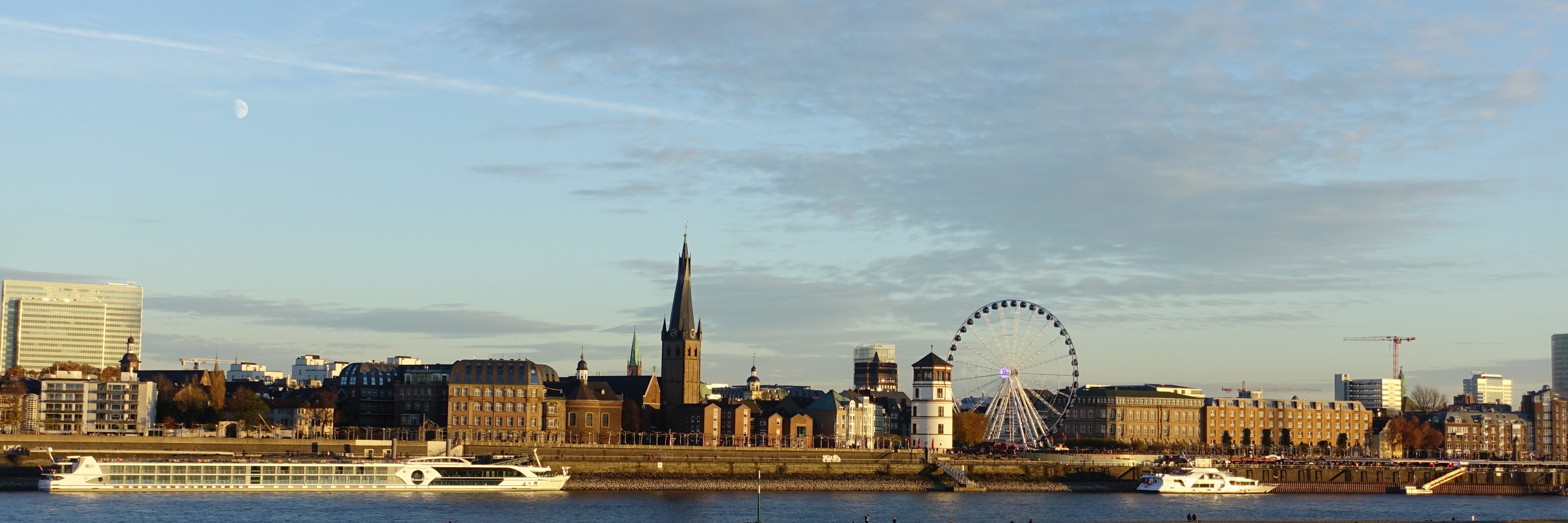From the Facebook feed Pearls from Düsseldorf, which is pictures of Düsseldorf from local graphic designer and photographer Markus Luigs (g), this picture of an old-school German storefront:
'Iron-Weber' is the name. The store sells Eisenwaren (iron goods), tools, house and kitchen appliances. So, basically, a hardware store. But the name Eisenwaren is satisfyingly antique; from an era in which tools actually were made mostly of iron. So the capture the old-school flair, I'd translate it as an 'ironmonger'.
This picture gives you a good idea of German street architecture. The sidewalk, as you'll notice, is clean. Then you have the underground-access grates. Some of these are for city utilities, but the ones close to the building are for trash: you take your trash downstairs to the cellar, then put it in a special dumb-waiter like contraption under the street. The trashmen open the grate and haul up the square plastic trash can through the opening, or sometimes go down into it. All the while yelling at each other in a mysterious language that probably takes years to learn. Children love watching the trash and the men disappear up and down the magic sidewalk-holes. It's loud, but it solves several problems: first, no trash bins waiting on the street. Second, the garbagemen don't have to enter the store to collect the trash.
Here's one difference between Germany and developing countries. You will never see these grates lying open in Germany, posing a threat to pedestrians. Never. In my many years living here, traveling all across the country, in neighborhoods both haughty and humble, I've never seen one of these things lying open, unattended, unless it was roped off with warning signs and tape. Nor do they ever break. You can walk over them every single time, without giving them a second thought. The average German probably walks over 30 of them every single day, never giving them a second though. Contrast this to basically any developing country, where sidewalk murder-holes are a fact of life. Here's a picture I took in Alexandria:
The contrast may help explain why so many people from places like Egypt want to relocate to places like Germany, no?
Then you have the display cases on either side of the storefront. Often, these are only big enough for posters, but these seem to have room enough for small displays. Then the actual display windows. If you want to run your own shop, you will generally go to a vocational school to learn, in great detail, how to structure an appealing shop-window display. This is called Schaufenstergestaltung in German. Of course, since this is a hardware shop, Weber hasn't really put all that much effort into it. Anything too schicki-micki (fancy) would probably drive away customers for these sorts of things.
Then you have the A-shaped ad placards to put in the way of pedestrians, stored safely beneath the chain protecting the door. Of course, since this is Germany, there are detailed regulations (g) for how large these stand-up signs (Stellschilder) can be, where you can put them, and how long you can leave them out. You may chuckle at those crazy Prussians, but you shouldn't. These signs are already an annoyance, and if the rules weren't there, they'd probably clog the sidewalk even more than they do already. Which would lead people to destroy them. So, a delicate balance is required between the needs of the shopkeeper and those of the public. That's what rules are for.
This store is almost certainly going to close soon, to be replaced by an artisanal vegan fair-trade frozen-yogurt studio. If this were Japan, the entire store would be recreated lovingly inside a museum, staffed by animatronic shopkeepers giving tinny mechanical advice to animatronic customers:
But since this is Germany, 'Eisen-Weber' will probably just disappear forever. At least we'll have the photo.
